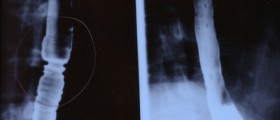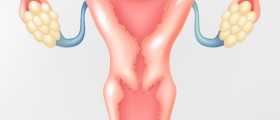
Esophageal cancer pulmonary complications
A lot of forms of esophageal cancer exist but two are seen more often than any other. These two types are called squamous cell carcinoma and adenocarcinoma. The cancer that develops in the squamous cells can appear anywhere along the esophagus but it is mainly discovered in the upper part of the organ. Adenocarcinoma is usually seen in the lower part of the organ, close to the stomach.Even though the experts are unsure why one person can develop cancer of the esophagus and the other cannot, they have discovered certain risk factors connected with this type of cancer. Risk factor is anything that increases the chance of developing cancer. The use of tobacco, heavy alcohol consumption and Barrett syndrome are three risk factors that are seen in most patients of esophageal cancer. Barrett syndrome is a condition where the cells located in the lower part of the esophagus are either replaced or been changed with abnormal cells. These abnormal cells do not necessarily become cancer cells but they are highly likely to. In addition to these three risk factors that can be influenced, there are certain risk factors that cannot be. A person who is a man, African American and old has the most chance of developing cancer of the esophagus.
Every cancer type has a lot more chance of being cured if the cancer was discovered in the early stages. This is rarely the case with cancer of the esophagus as the symptoms are usually not seen or they appear when the disease has progressed quite a lot. Problems with swallowing and unexplained weight loss are two of the most often seen signs of this type of cancer. In addition to these two there are several more signs that point to this disease including pain behind the breastbone, hoarseness and cough and indigestion and heartburn.After the person has experienced some of these signs and gone to the hospital the doctor will need to diagnose the disease and confirm that the patient is suffering from cancer of the esophagus. Apart from talking to the patient about the symptoms and looking into his or her medical history, the doctor will also order some tests like a chest x-ray and barium swallowing in order to properly diagnose the disease.
How to prepare for the doctor’s visitWhen the cancer has been diagnosed, the next step is diagnosing the stage of it and seeing whether the tumor has spread to other parts of the body. Learning the stage of the disease is an essential factor before the treatment plan is made. Another factor that is of great significance for the making of the treatment is the general health of the patient. There are a lot of tests that are being used for the staging of the disease like bronchoscopy, laryngoscopy, a CT scan, endoscopic ultrasound, thorascopy, laparoscopy and a PET scan, among others. The experts have also discovered that the cancer can spread to the other part of the body in three ways. These three ways of the spreading of the cancer are through blood, through tissue and through the lymph system.
The experts have still not come up with a treatment plan that can cure cancer of the esophagus and the treatment plan is different in almost every patient. The chances of beating cancer are the highest when the disease is diagnosed in the early stages. However, that does not occur very often in case of this type of cancer. Pain is present in every patient suffering from any type of cancer and that is why every treatment needs to relieve the pain. Other side effects occur as well and due to that reason the experts have come up with a lot of different complementary pain management therapies that will treat them. The pain that almost every esophageal cancer patient experiences during the treatment is either acute or chronic. Acute pain does not last for a long time and it mainly develops due to tissue damage. In order for the management of this type of pain to be successful, the actual cause of it needs to be discovered and treated. Chronic pain does not last for a short period of time. According to the experts the pain need to be felt for at least three months in order to be identified as chronic.
















Your thoughts on this
Loading...